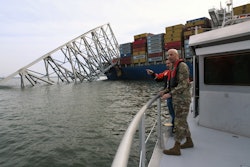In the fleet world, just as in any business, there are known unknowns. We know they’re there, even if we can’t see them. Think of them as blind spots. And like blind spots, we want better visibility. Blind spots lead to unwanted eventualities, and nobody wants either. What everybody does want is to know what’s in those blind spots so they can eliminate them.
For fleet managers, it’s all too often a case of, “if only”… If only they had visibility of that blind spot, they’d understand what’s behind the bottlenecks and supply chain issues they’re constantly fighting. If only they knew what was causing that blind spot, they’d know what’s in it, and calculate the sum of its effects. If only they knew how to get rid of that blind spot.
Enough with “if only." It’s time to eliminate these blind spots. But to do so means understanding what they are and what causes them.
In the fleet world, blind spots exist for many reasons. They exist between vendors, because each vendor has its own system to manage performance; between business lines that use different reporting metrics; and even between departments, because reporting still relies on human efficiency (and competency!).
For clear visibility, fleets need the ability to access and integrate relevant information from appropriate business lines, which includes vehicle acquisition and upfitting, delivery and customer use, re-leasing or evaluating the vehicle, and then choosing remarketing channels. Ideally, they’d have the ability to consolidate information from all those vendors, and bring it together in a single platform that provides a complete overview of everything that's running in their business.
Clearly, blind spots are a big negative, so let’s flip this: eliminating blind spots is a big positive. With visibility into the previously unknown, fleets can monitor process flows all the way from vehicle acquisition to off-boarding. They’d then be able to compare processes across countries and across business divisions, identify efficiencies, save money, accelerate processes, and potentially increase revenue, growing their business by increasing vehicle yield and boosting client satisfaction. More effective as an organization, a fleet with clear visibility can proactively strengthen performance throughout its value chain.
Everyone benefits from visibility. Think of a typical order from an online delivery company such as, say, Amazon. Notified that your $12 package of AA batteries is on its way, a quick look at your phone shows you the exact location of your order, an accurate delivery window, and maybe even a picture of the package on your doorstep once delivered.










